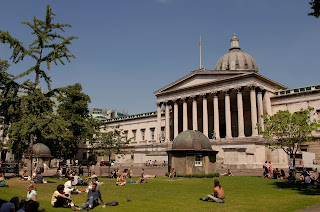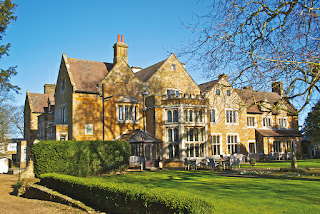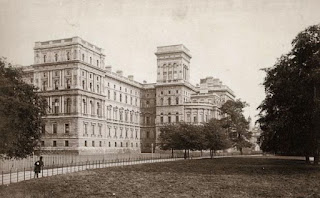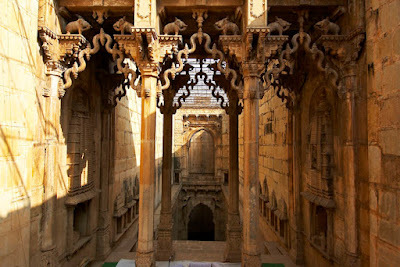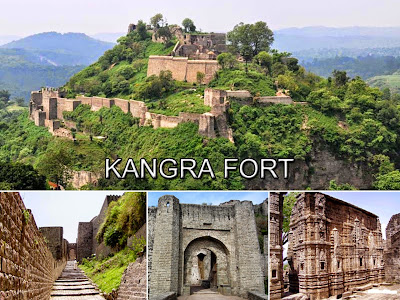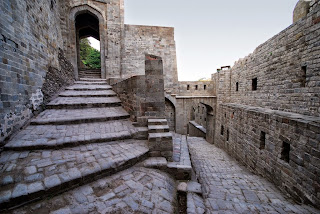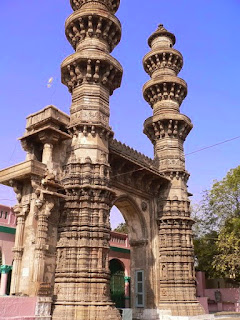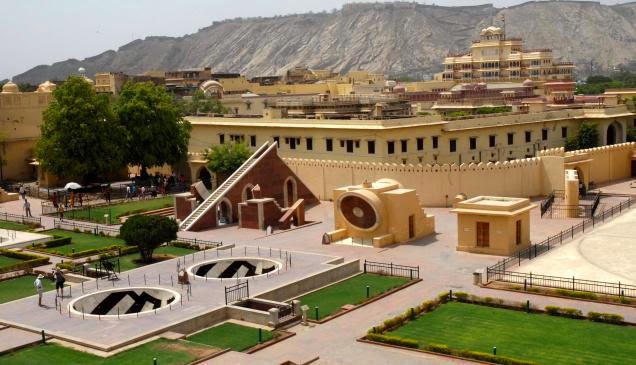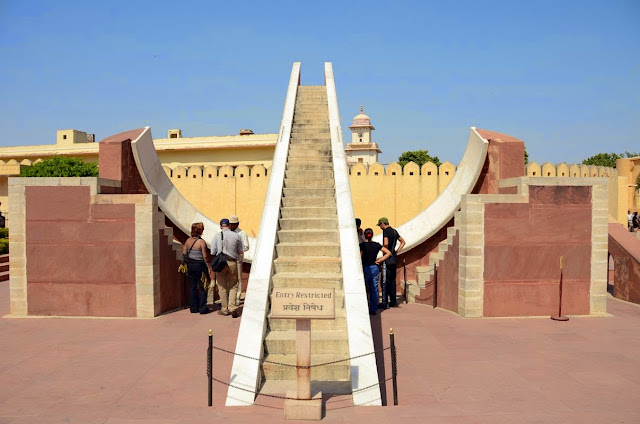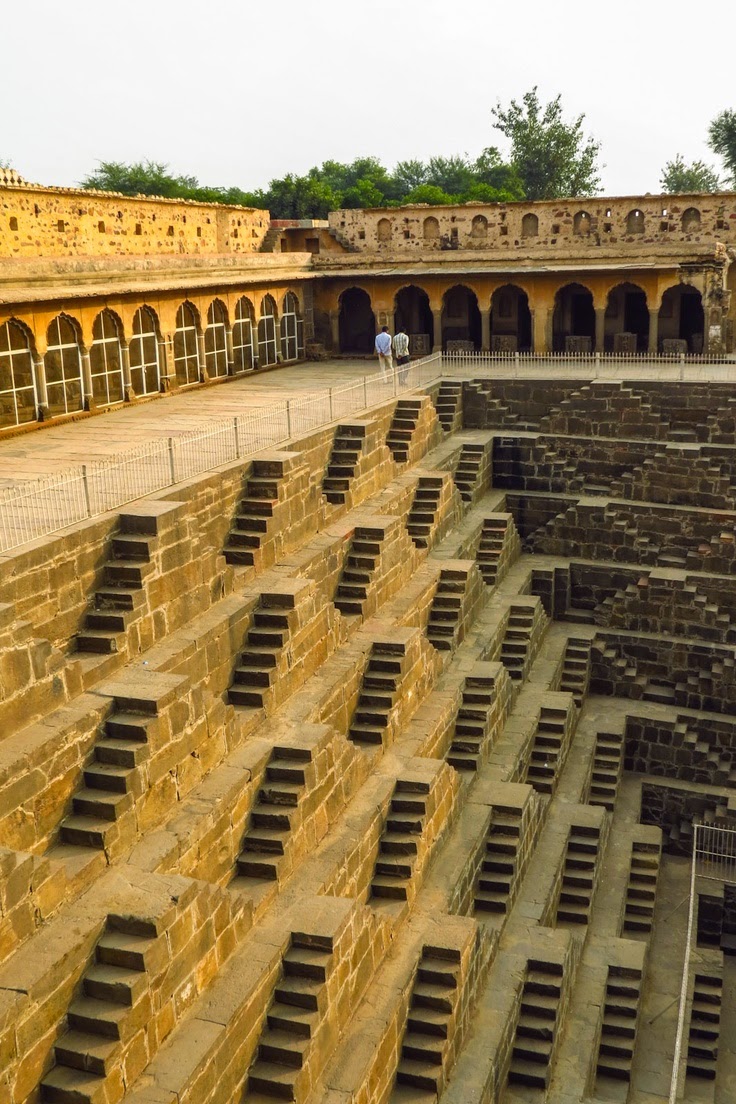Delhi is the capital of India, has a rich past. The city is spotted with attractive forts, mosques, and monuments left from the Mughal emperor that once occupied the beautiful city. Tourism is a huge contrast between Old Delhi and New Delhi, and it is interesting to spend time exploring both. If you feel needing some relaxation, just head to one of Delhi's well established landscaped gardens.
Here's a details of the top 10 Delhi sites and places to see. The great facts are that several of them are free to visit! (And can easily be visit by Delhi's bus metro).
1. Red Fort
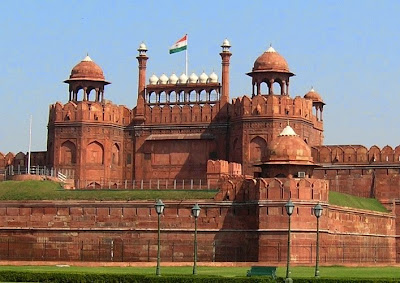
|
| Red fort in Delhi |
Delhi'smost well-known monument, the Red Fort, situated as a great memory of the Mughal rulers who ruled India. Its walls, which spread over two kilometers (1.2 miles), which was constructed in 1638 to keep out attacker. But, they were unsuccessful to prevent the fort being captured by the British. To take your thoughts back to the earliest period, a 1 hr. light and sound show of the fort's history is organize every evening to take your thoughts back to the ancient period.
Location: Opposite Chandni Chowk, Old Delhi.
Entry Cost: Foreigners 250 rupees. For Indians 10 rupees. Free for children less than 15 years.
Opening Hours: 9 a.m. to 6 p.m. Closed Mondays.
2. Jama Masjid
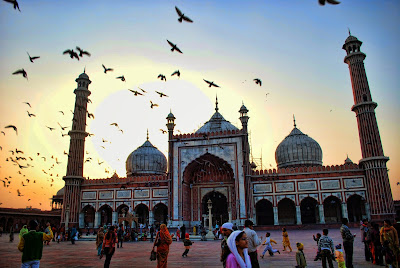
|
| Jama Masjid |
Jama Masjid is another wonderful treasure of the Old City, and is the biggest mosque in India. Its courtyard is able to hold an unbelievable 25,000 devotee. The mosque take 13 years to complete, and was finished in 1650. A challenging climb to the top of it’s the southern part of tower will probably reward you having a stunning view throughout the rooftops of Delhi. Be sure to dress correctly at the time of visiting the mosque or you won't be permitted in. it’s means covering your legs, head and shoulders.
Location: Opposite Chandni Chowk, Old Delhi. Opposite the Red Fort.
Entry Cost: Free, but a camera fee of 300 rupees applies.
Opening Hours: Daily, apart from when prayers are being held from 12.15 p.m. to 1.45 p.m. It closes before sunset.
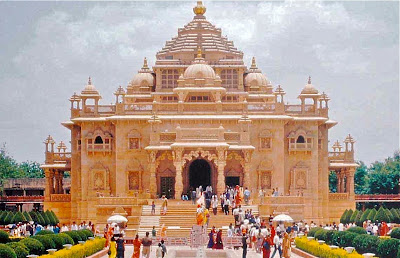
|
| Swaminarayan Akshardham |
A comparatively new attraction, this huge temple compound was constructed by the BAPS Swaminarayan Sanstha religious organization and started in 2005. It's devoted to showing Indian traditions. As well as the amazing architecture of the white marble and pink stone shrine, the compound includes extensive sculptures, garden and boat ride. Allow sufficient time to explore it completely --a minimum of half every day. Do remember that cell mobile phones and cameras aren't permitted on the inside.
Location: N. H. 24 | Near Noida Mor, New Delhi.
Entry Cost: Free. However, tickets are required to view the exhibitions.
Opening Hours: Tuesday to Sunday, 9.30 a.m. until 6.30 p.m. (last entry). Closed Mondays.
4. Humayun's Tomb
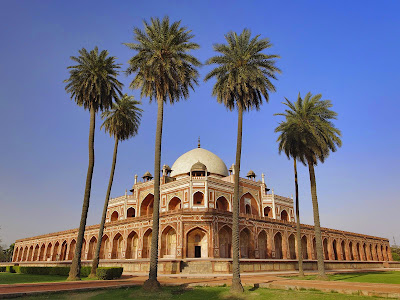
|
| Humayun's Tomb |
If you imagine Humayun's Tomb looks a tad like this Taj Mahal inside Agra, that's since it was this inspiration to the Taj Mahal's construction. The grave was built in 1570, and home the body of the second Mughal ruler, Humayun. This was the first time of this kind of Mughal architecture to be constructed in India. The tomb is part of a larger compound that's set among stunning gardens.
Location: Nizamuddin East, New Delhi. Near the Nizamuddin train station, off Mathura Road.
Entry Cost: Foreigners, 250 rupees. Indians 10 rupees. Free for children less than 15 years.
Opening Hours: Sunrise until sunset, daily. It's best viewed in the golden light of the late afternoon.
5. Lodi Gardens
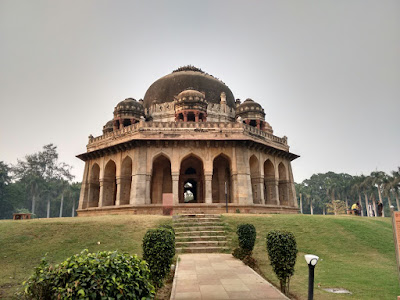
|
| Lodi Gardens |
Lodi Gardens gives a peaceful retreat from city life, which is the place to come if you're feeling worn-out and tired. The huge Gardens were constructed by the British in 1936 in the tombs of 15th and 16th century leaders. yoga practitioners, Joggers, and young couples all enjoy this park.
Location: Lodi Road, not far from Humayun's Tomb.
Entry Cost: Free.
Opening Hours: Daily from sunrise until 8 p.m., but Sundays are particularly busy.
6. Qutab Minar
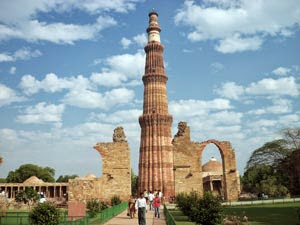
|
| Qutab Minar |
QutabMinar is the come in word’s tallest brick minaret. It is a best example of Indo–Islamic architecture. It was construed in 1206, but the motive still a mystery. Some suppose that it was constructed to signify victory and the establishment of Muslim regulation in India, while others say it was used to call the truthful to prayer. The tower has five different stories, and is covered with complicated carvings and written verses from the Muslim holy Quran. There are also a many other historic monuments.
Location: Mehrauli, south New Delhi.
Entry Cost: Foreigners, 250 rupees. Indians, 10 rupees. Free for children under 15 years.
Opening Hours: Daily, Sunrise until sunset.
7. India Gate
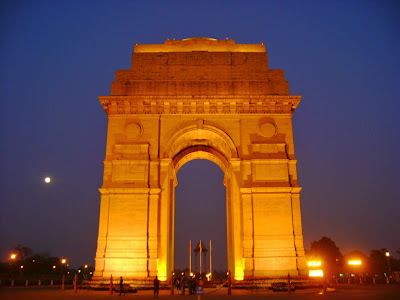
|
| India Gate |
The huge archway in the center of New Delhi, India Gate built in the memory of the Indian soldiers who sacrifices their lives fighting in Second World War for the British Army. At night it shines warmly under floodlights and the gardens is famous to enjoy a hot summer's evening.
Location: Rajpath, near Connaught Place, New Delhi.
Entry Cost: Free.
Opening Hours: Always open.
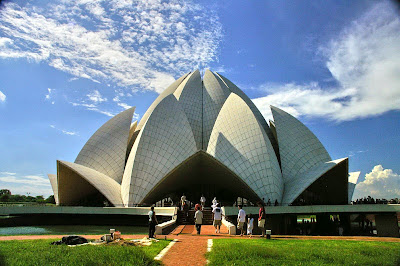
|
| Bahai (Lotus) Temple |
The Bahai Temple is usually referred to as the Lotus Temple, it's designed like an Indian nation flower lotus flower. It's particularly attractive at night, when it's nicely light up. It was constructed by white marble, the temple pertains to the Bahai Faith, Which promote the unity of all people and religions. Everyone is welcome to worship there. Peaceful gardens and ponds surrounding the temple is a vast place for a relaxing and picnic.
Location: Near Nehru Place, south New Delhi.
Entry Cost: Free.
Opening Hours: Daily, from 9.00 a.m. until sunset.
